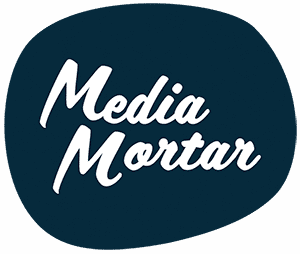
In the words of our favourite marketing guru, Seth Godin, “everyone is not your target audience”.
And yet, this is without a doubt the most common misconception we encounter when onboarding a new client.
On behalf of marketers across the globe – can we please ask you to define your target audience, so your marketing messages reach someone who is actually listening?
We’re not talking about writing tomes of strategy or complex Gantt charts; we’re only asking you to answer one simple question: who is your content for?
It’s not a hard question, but it’s a loaded one. That’s why we’re here to walk you through our step-by-step guide to defining your target audience.
Step 1: Find what Seth calls your ‘true fans’
 The biggest mistake we see brands make is trying to appeal to the masses.
The biggest mistake we see brands make is trying to appeal to the masses.
At its core, marketing is about changing the minds of people.
It’s therefore incongruous to think you can change everyone’s mind. To do so would be too hard – and what we know for sure, is no one buys as a result of indifferent marketing.
Instead, try and change one person.
Start by thinking small, carving out an audience niche with the smallest viable market in mind. That is, what is the smallest market you need to convince to make your marketing efforts worthwhile?
The idea is that when you build true fans, they do the marketing for you. And just like mice, true fans breed more true fans.
We subscribe in a big way to the theory that it’s no longer about the mass market but the micro one – and we have a target audience resource to help get you clear on yours.
To help you complete this step, finish this sentence: My product / service or event is for people who __________________.
Step 2: Know what you stand for, know what you don’t stand for
 It’s ok not be a product, service or event that suits everyone. We’re not – and we’re not even slightly concerned by that.
It’s ok not be a product, service or event that suits everyone. We’re not – and we’re not even slightly concerned by that.
According to Seth, telling a customer “we’re not for you” shows respect that you’re not going to waste their time, pander to them, or change their beliefs – and this distinction is important. Not only does it release your customer, it frees you up to do more work that matters.
If you’re not selling a product for everyone – start by narrowing down who you are not selling to.
We do a lot of work in rural communities, and this exercise is possibly even more important than the first step. Because driving 1500km in the name of an ‘adventure’ is not for everyone, and it would be wasting everyone’s time, energy and marketing spend to convert the Bali traveller to say, Barcaldine.
To help you complete this step, finish this sentence: My product / service or event is for people who do not __________________.
Or better yet, finish this one: People don’t choose my product/service or event because __________________.
Step 3: Define your USP
 If you’ve read this post, you’ll know one of our biggest bug bears is that most businesses can’t define their USP.
If you’ve read this post, you’ll know one of our biggest bug bears is that most businesses can’t define their USP.
Most default to this as their standard response “but we’re better than the competition”.
It’s important to call out that “better” is completely subjective. To some people, podcasts are better than TV, and to others, books are better than podcasts. This doesn’t actually make one better – it’s merely subjective.
In our industry, we might think we do better website copy than our competition, but the truth is for someone who wants a website wanting a very serious tone of voice, we’re not the better choice. You just have to read our work to know that.
To help define your USP, finish this sentence: Customers will tell their friends ___________________ about my product.
Step 4: Design your creative so it’s less about you and more about them
 We hate to break it to you, but no customer actually cares about what you do. They only care about what it will do for them.
We hate to break it to you, but no customer actually cares about what you do. They only care about what it will do for them.
You may have heard the old marketing adage, Features vs Benefits?
It goes something like this – people don’t walk into Bunnings wanting a drill. They go in wanting to drill a hole. More than this, they want a hole to install a shelf to store their clutter.
See where we’re going here? You’re no longer in the business of selling drills, you’re actually selling storage solutions, peace of mind and the mind set that goes along with uncluttered spaces (*waves slyly at our girl Marie Kondo*).
To do this, you need to lead with what your customers are going to think, feel, gain out of your product or service.
And if you haven’t connected the dots, the only way you’re going to know what your customer is thinking, is by being crystal clear on who they are and what they need from you in the first place.
To help define what your customers motivations are, finish one (or all) of these sentences:
My customers are afraid of _____________________.
My customers are short on _____________________.
My customers are frustrated by ____________________.
Step 5: Report how it hit your customer between the eyeballs
 If you read this post, you’ll know we’re serious about reporting – especially since Facebook Ads Manager allows you to target audiences with absolute specificity.
If you read this post, you’ll know we’re serious about reporting – especially since Facebook Ads Manager allows you to target audiences with absolute specificity.
The biggest gap we see however with clients is that they report on numbers that weren’t directly correlated with the campaign.
For example, running an awareness campaign and reporting conversions is the same as ordering apples and wondering why they don’t taste like apple crumble. They both start the same but end up very different based on the process that happens in between.
If you want a true read on whether you successfully targeted your audience, you’ll want to make sure you’re reporting the correct metrics.
To help define whether you were successful, finish this sentence:
We successfully targeted ____________ customer through _____________ campaign using _____________ tactics.
Save this down, because if it worked, you’ll want to do it again.
When you’re hitting your customer with bullseye accuracy, you’ll find you save marketing dollars and leave more impact with your message every time, which really, is what this is all about.

By Hannah Statham
Hannah Statham is The Boss at Media Mortar. She’s a heavy weight wordsmith, punching with puns, analogies and metaphors that leave readers wanting more. When she’s not refreshing her Instagram feed, you’ll find Hannah walking her rescue greyhound Olivia.

Recent Comments